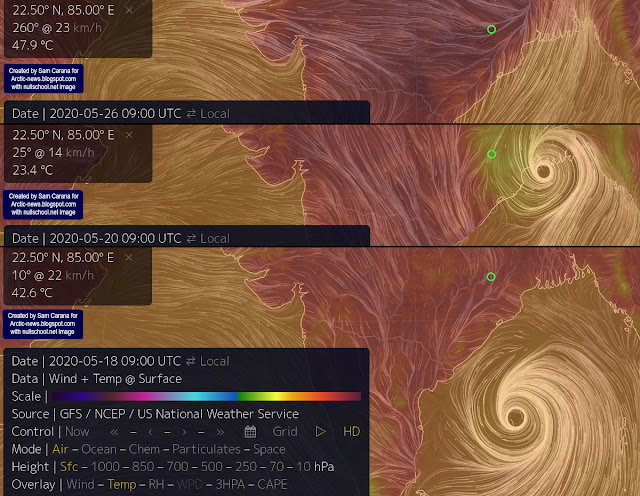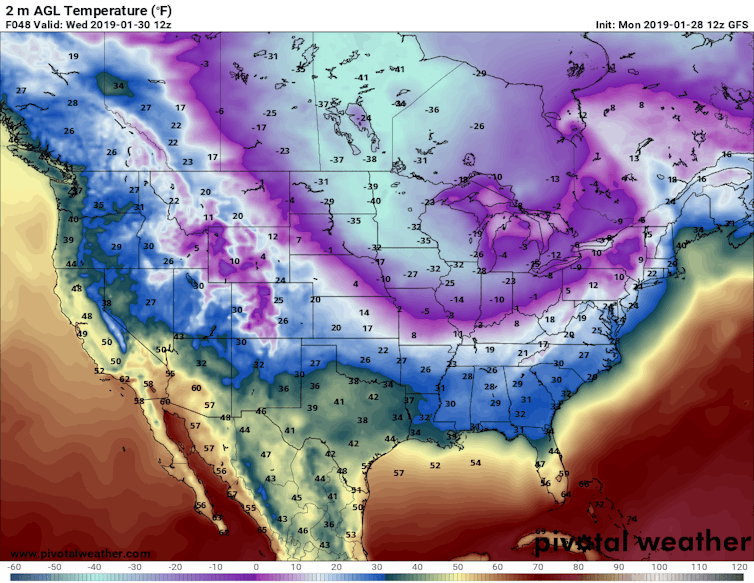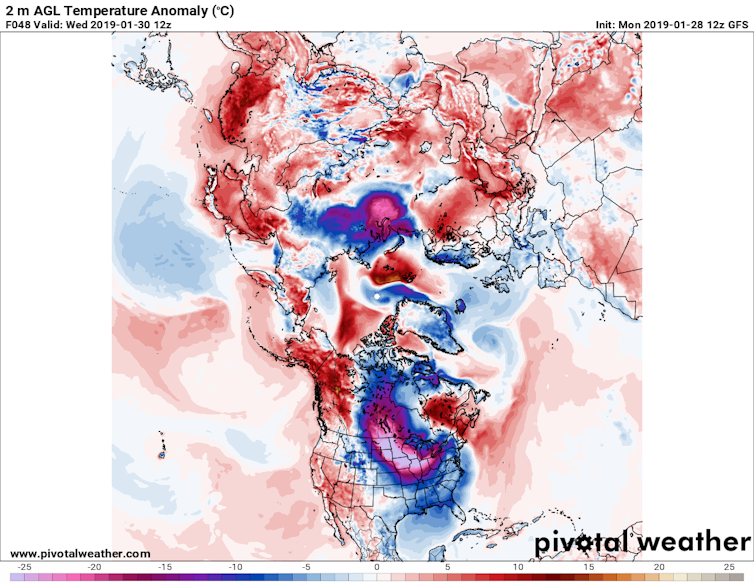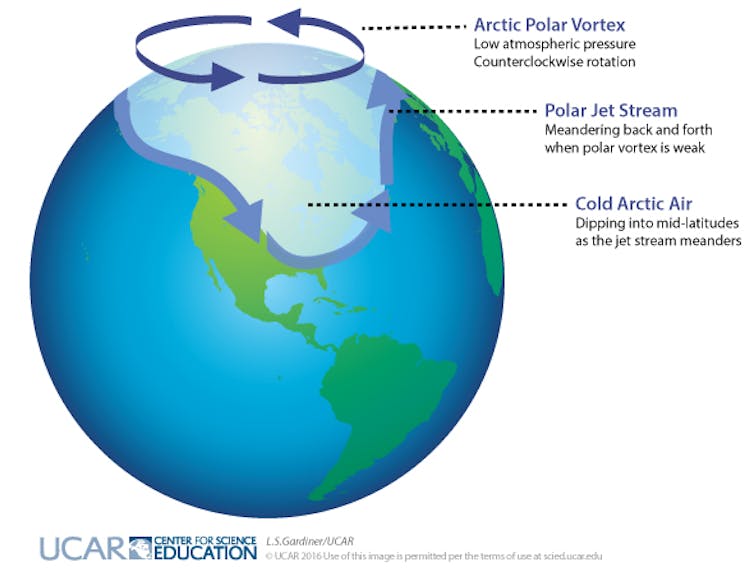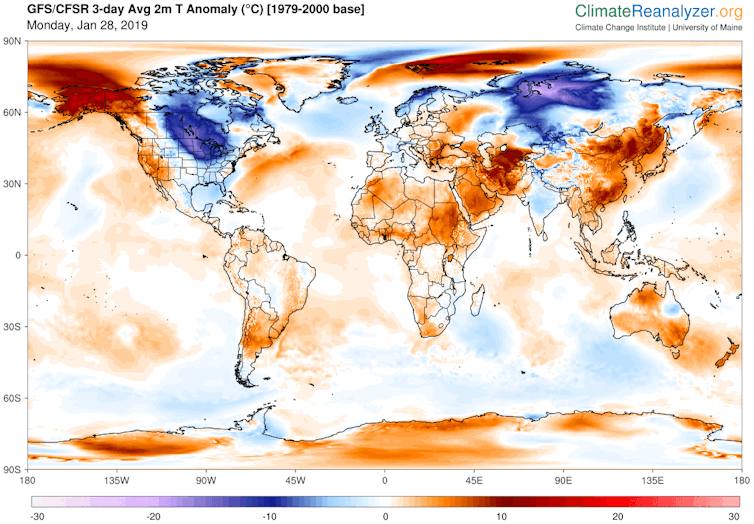The year 2024 looks to be worse than the year 2023. The above chart shows sea surface temperatures that were extremely high in 2023 followed by a steep rise in 2024, crossing 21°C in early January 2024.
The chart below illustrates this further, showing the daily sea surface temperature anomaly using 1 Sep. 1981 to 31 Dec. 2023 data versus the 1982-2011 mean for latitudes between 60°S and 60°N.
The importance of sea surface temperatures
Slowing down of the Atlantic meridional overturning circulation (AMOC) results in less ocean heat reaching the Arctic Ocean and, instead, a huge amount of ocean heat has been accumulating in the North Atlantic in 2023.
Slowing down of the Atlantic meridional overturning circulation (AMOC) results in less ocean heat reaching the Arctic Ocean and, instead, a huge amount of ocean heat has been accumulating in the North Atlantic in 2023.
Much of the heat in the North Atlantic could soon be pushed abruptly into the Arctic Ocean, as storms can temporarily speed up currents strongly, carrying huge amounts of ocean heat with them into the Arctic Ocean.
The mechanism behind this has been described often in earlier posts and this page. Meltwater and rain can cause a freshwater lid to form and grow at the surface of the North Atlantic and this, in combination with greater stratification as ocean temperatures rise (above image), can enable more ocean heat to increasingly travel underneath this lid from the North Atlantic into the Arctic Ocean, and especially so at times when Jet Stream changes are causing storms that speed up ocean currents along this path.
The danger is illustrated by the above image, showing a forecast for January 11, 2024, with the Jet Stream moving almost vertically over the North Atlantic to the north. The image below shows heat over the North Atlantic, with temperatures reaching as high as 10.5°C or 50.8°F over Greenland (at the green circle) at 1000 hPa on January 10, 2024, 07:00 UTC.
The image below shows 2 meter temperature anomalies on January 11, 2024.
Very high sea surface temperature anomalies can occur in the path of the Gulf Stream, as illustrated by the image below showing high sea surface temperatures on January 3, 2024, as high as 11.7°C (21°F) at the green circle, over the counterpart of the Gulf Stream in the Pacific, off the coast of Japan.
Earlier posts have warned about this, such as this post and this video, almost seven years ago. This could cause events during which much ocean heat moves abruptly into the Arctic Ocean, resulting in seafloor methane releases, overwhelming of the latent heat buffer and causing sea ice loss (and thus albedo loss), as well as loss of lower clouds (thus causing further albedo loss), while open oceans are also less efficient than sea ice when it comes to emitting in the far-infrared region of the spectrum and while an ice-free Arctic Ocean will also release more ocean heat into the atmosphere.
Arctic sea ice volume is very low for the time of year, as illustrated by the above image.
A large part of the thicker sea ice is located off Greenland's East Coast, as illustrated by the above image. Much of the sea ice will therefore rapidly disappear as the water heats up in 2024.
The above image, adapted from tropicaltidbits.com, shows a forecast for October 2024 of the 2-meter temperature anomaly in degrees Celsius, based on 1984-2009 model climatology. The anomalies are forecast to be very high for the Arctic Ocean.
In the video below, Jennifer Francis is interviewed by Nick Breeze.
The importance of daily air temperatures, Northern Hemisphere
 |
| [ from the Extinction page ] |
The Northern Hemisphere is home to some 90% of the world population of more than 8 billion people, with much of them living in South-East Asia.
As more people become aware of the dire situation, widespread panic may set in.
As more people become aware of the dire situation, widespread panic may set in.
People may stop showing up for work, resulting in a rapid loss of the aerosol masking effect, as industries that now co-emit cooling aerosols (such as sulfates) grind to a halt.
Many people may start to collect and burn more wood, resulting in an increase in emissions that speed up the temperature rise.
As temperatures rise, more fires could also break out in forests, peatlands and urban areas including landfills and waste dumps, further contributing to emissions that speed up the temperature rise.
The image on the right illustrates how fast a huge temperature could unfold.
As a somewhat sobering footnote, humans will likely go extinct with a 3°C rise and most life on Earth will disappear with a 5°C rise, as discussed in an earlier post.
The image on the right illustrates how fast a huge temperature could unfold.
As a somewhat sobering footnote, humans will likely go extinct with a 3°C rise and most life on Earth will disappear with a 5°C rise, as discussed in an earlier post.
Climate Emergency Declaration
The situation is dire and the precautionary principle calls for rapid, comprehensive and effective action to reduce the damage and to improve the situation, as described in this 2022 post, where needed in combination with a Climate Emergency Declaration, as discussed at this group.
The situation is dire and the precautionary principle calls for rapid, comprehensive and effective action to reduce the damage and to improve the situation, as described in this 2022 post, where needed in combination with a Climate Emergency Declaration, as discussed at this group.
• Climate Reanalyzer
https://climatereanalyzer.org
• Danish Meteorological Institute - Arctic sea ice volume and thickness
https://ocean.dmi.dk/arctic/icethickness/thk.uk.php
• New Record Ocean Temperatures and Related Climate Indicators in 2023 - by Lijing Checg et al. (2024)
• Cold freshwater lid on North Atlantic
https://arctic-news.blogspot.com/p/cold-freshwater-lid-on-north-atlantic.html
https://climatereanalyzer.org
• Nullschool
• Danish Meteorological Institute - Arctic sea ice volume and thickness
https://ocean.dmi.dk/arctic/icethickness/thk.uk.php
• New Record Ocean Temperatures and Related Climate Indicators in 2023 - by Lijing Checg et al. (2024)
• Cold freshwater lid on North Atlantic
https://arctic-news.blogspot.com/p/cold-freshwater-lid-on-north-atlantic.html
• Extinction
• Climate Plan
https://arctic-news.blogspot.com/p/climateplan.html
• Climate Emergency Declaration
https://arctic-news.blogspot.com/p/climate-emergency-declaration.html
https://arctic-news.blogspot.com/p/climateplan.html
• Climate Emergency Declaration
https://arctic-news.blogspot.com/p/climate-emergency-declaration.html


































